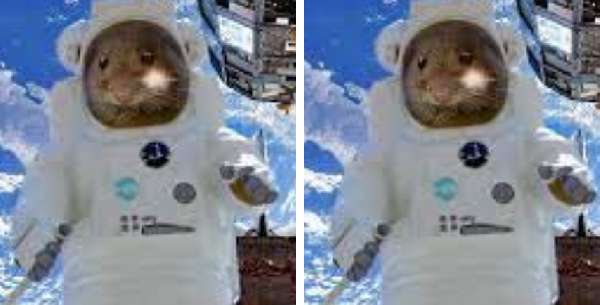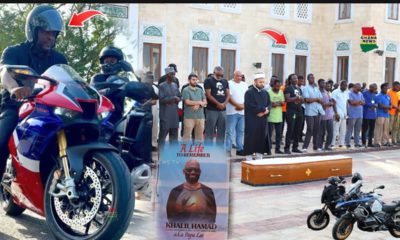News Africa
Jean-Patrice, the Congolese rocket man determined to break the color barrier in space

Kéka was expecting to receive the inspiration he needed to shoot his dream higher like the rockets he wanted to build one day, but was discouraged when his college professors told him it was impossible for an African to build a rocket. However, the ridiculing and name-calling did little to deter him, Kéka rather kept his gaze on the bigger picture and was determined to become the first African to launch a rocket into space.
His dream has been to enable Congolese people to appreciate the essence of space research. However, in a country where many live on less than $2 a day and war drums often beat in rural communities, bread-and-butter issues are the highest priority to many people. The unifying force of the innovation he is pursuing is the least priority of his people. He is however resolute that if he could get his invention into space someday, it could be the stitch that will bring the people together under one umbrella, even if for a few hours.
In 2007, he launched his first rocket, which he called Troposphere 1. It was 1 meter high and weighed 20 kilograms, according to Le Monde. Though the launch wasn’t successful because the homemade rocket was poorly insulated and rainwater tampered with its engine system, he observed the mistakes of his previous invention and applied them to the next rocket, Troposphere 2.
Troposphere 2 was a success. It flew at 1,500 meters of altitude. Enthused by this streak of breakthrough, he set his objective to launch Troposphere 4, which was much heavier than the earlier two. It weighed 250 kilograms and was able to fly above 1,500 kilometers.
But, his next dream to get a bigger rocket, Troposphere 5, into outer space hit a snag; it was larger and weightier than the rest. He hoped it would reach 36 kilometers, but its combustion chamber caught fire even before it made that mark.
Kéka recalled this vividly in 2009, the rocket skidded off its trajectory and crashed to the ground. He is of the view that the hallmark of science is a double-barreled pole with its successes and failures. Currently, the bigger objective is yet to be attained, he hopes to get his Troposphere out of the earth’s surface at an altitude of about 8 and 15 kilometers.
While working on getting a 15-meter-long rocket expected to reach 200 kilometers off the ground, he got the needed international attention. His resilience and unwavering aspiration were filmed by Swiss documentary makers, Christian Denisart and Daniel Wiss, who helped him raise about €25,000 via a participatory financing scheme in support of his project.
He met with the Swiss first astronaut, Claude Nicollier, who interacted with and inspired him. He hopes his Troposphere 6, which is set to take off this year will be a success. With the help of a Swiss microbiologist, he is hoping to test the possibility of bacteria getting into space. Though there is resistance from animal rights activists against him using rats for this experiment, he remains adamant and wants his homemade rockets to sign his name in the skies.
Source: face2faceafrica.com
-

 Lifestyle4 weeks ago
Lifestyle4 weeks agoRoad Safety Authority narrates how buttocks causes road accident
-

 GENERAL NEWS1 month ago
GENERAL NEWS1 month agoWhy 15 police officers stormed Owusu Bempah’s church – Kumchacha narrates
-

 GENERAL NEWS4 weeks ago
GENERAL NEWS4 weeks agoWatch how Ibrahim Mahama rode Honda superbike to pay last respects to late friend
-

 GENERAL NEWS1 month ago
GENERAL NEWS1 month agoHow Offinso residents storm destooled queen mother’s house, demand for new chief
-

 South Africa News1 month ago
South Africa News1 month agoWoman thrown out of a speeding taxi while on her way to work
-

 GENERAL NEWS2 weeks ago
GENERAL NEWS2 weeks agoDeadly clash between youth and navy personnel results in two deaths at Tema Manhean
-

 SHOWBIZ KONKONSAH2 weeks ago
SHOWBIZ KONKONSAH2 weeks agoJunior Pope’s Death: Video of John Dumelo refusing to join canoe for movie shoot over safety concerns resurfaces
-

 News Africa2 months ago
News Africa2 months ago‘Satanically dubious’ – SCOAN releases statement on BBC’s report about TB Joshua, church




